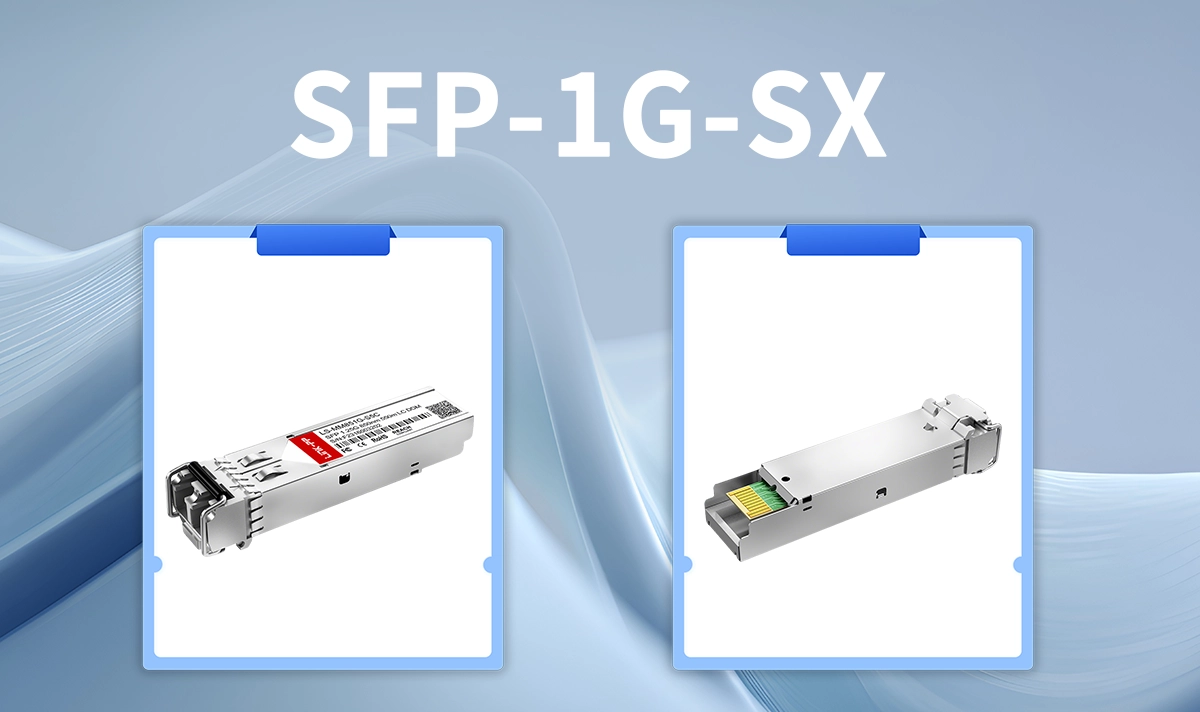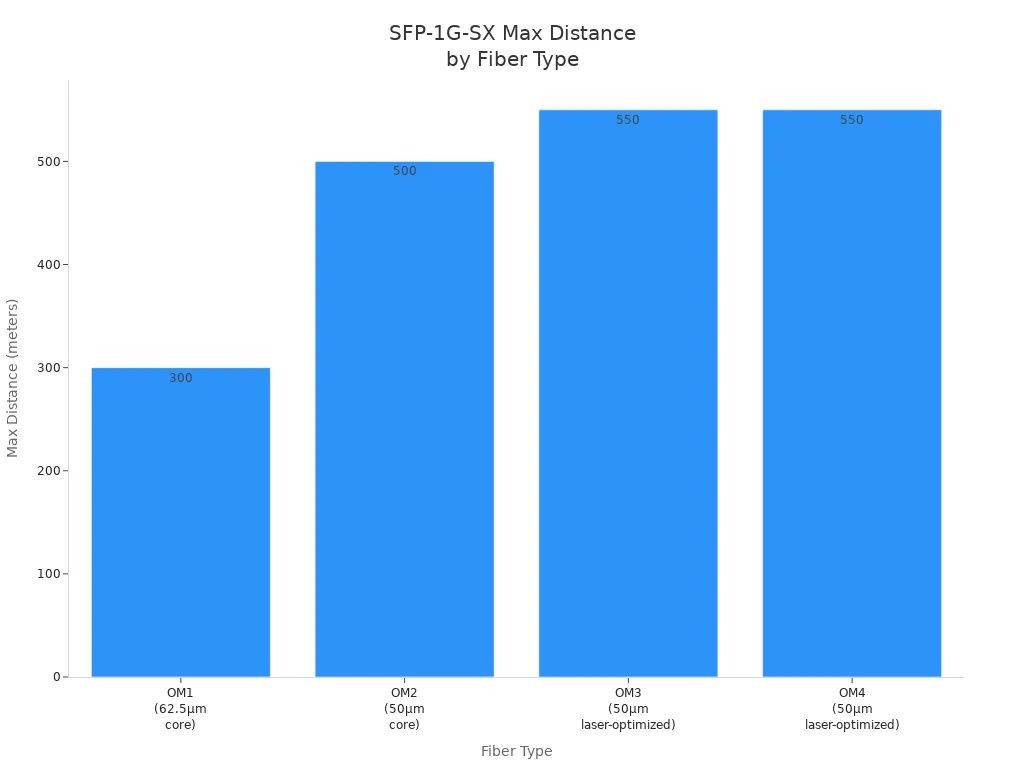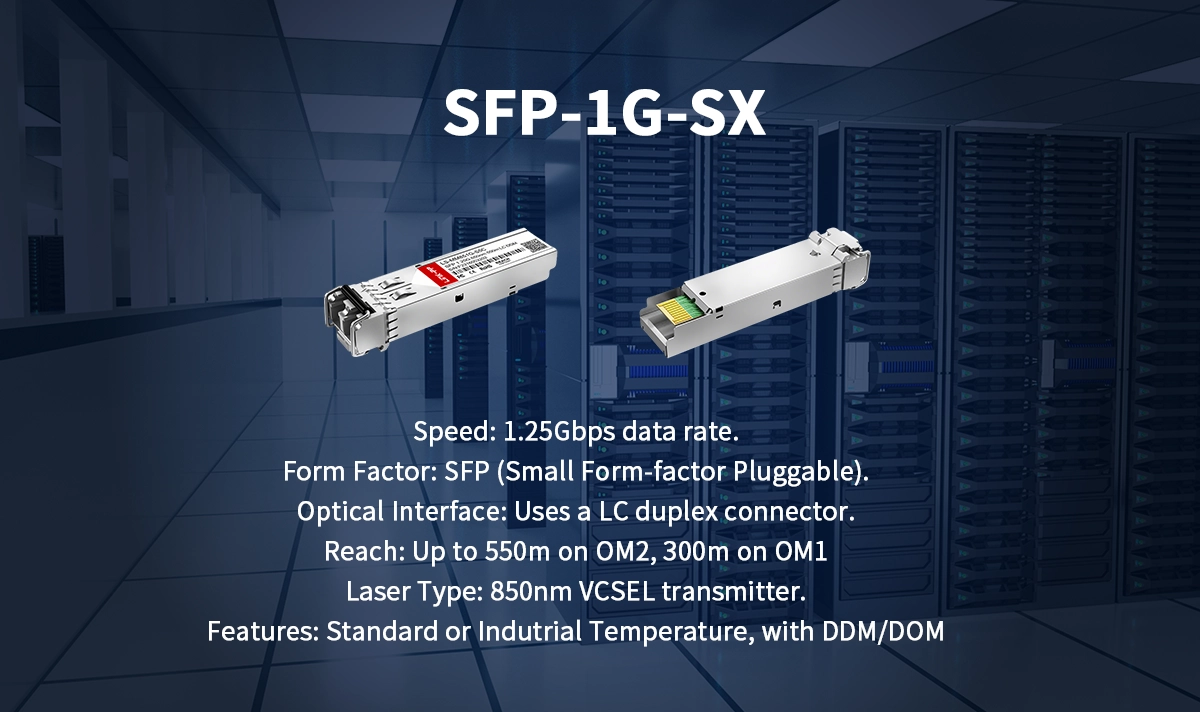
This guide dives deep into the SFP-1G-SX transceiver, the industry-standard solution for 1 Gigabit short-range fiber optic connections. Learn about its specifications (1000BASE-SX standard, 850nm wavelength), compatibility, typical applications, deployment best practices, and why choosing a reliable supplier like LINK-PP matters. Discover how this module powers core enterprise networking.
The relentless demand for faster, more reliable network infrastructure makes fiber optics indispensable. For high-speed, short-reach connections within buildings, campuses, or data centers, the SFP-1G-SX transceiver module remains a fundamental workhorse. This compact, hot-pluggable device seamlessly converts electrical signals from your switch or router into optical signals for transmission over multimode fiber (MMF). Understanding its capabilities and optimal use is crucial for network engineers and IT managers.
✦ What Exactly is an SFP-1G-SX Module?
An SFP-1G-SX is a specific type of Small Form-factor Pluggable (SFP) optical transceiver. Let's break down its key characteristics:
Speed: Supports 1 Gigabit Ethernet (1Gbps / 1000Mbps).
Standard: Compliant with the 1000BASE-SX IEEE 802.3z standard.
Wavelength: Operates at 850nm (nanometers).
Fiber Type: Designed specifically for use with multimode fiber (MMF).
Connector: Typically uses LC duplex connectors.
Distance: Transmits signals over relatively short distances, depending on the fiber type and quality.
Key Specifications and Performance
The achievable distance is the most critical specification for the SFP-1G-SX and depends heavily on the diameter and bandwidth grade of the multimode fiber used:

Why the Distance Cap? The 1000BASE-SX standard inherently limits the distance to 550 meters, even on higher-grade OM3/OM4/OM5 fiber. For longer distances on MMF, other standards like 1000BASE-LX or single-mode solutions are needed.
Wavelength: The 850nm wavelength is optimal for cost-effective VCSEL (Vertical Cavity Surface Emitting Laser) light sources used with multimode fiber.
✦ Common Applications: Where SFP-1G-SX Shines
Building Backbones: Connecting switches between floors or wings within an office building or campus.
Data Center Rack-to-Rack Links: Short connections between adjacent racks or within the same row.
High-Bandwidth Workgroup Connectivity: Linking high-performance workstations or servers requiring more bandwidth than copper can reliably provide over distance.
EMI/RFI Sensitive Environments: Where electrical interference makes copper (Cat5e/Cat6) problematic.
Security Systems: Connecting high-resolution IP cameras back to a central switch over distances exceeding copper limits.
✦ Critical Considerations: Compatibility and Interoperability
While standardized, ensuring seamless operation requires attention to compatibility:
Host Device Compatibility: The module must be compatible with the specific make and model of your switch, router, server NIC, or media converter. Vendors often use coded SFP compatibility checks. LINK-PP modules are rigorously tested for broad Cisco compatibility, HPE compatibility, Juniper compatibility, Dell compatibility, and many others. Always verify compatibility before purchase.
Fiber Type Mismatch: Using single-mode fiber (SMF) with an SFP-1G-SX module will not work and can potentially damage equipment. Conversely, using an LX module on MMF often requires a mode conditioning patch cable.
DDM/DOM Support: Many modern SFP-1G-SX modules support Digital Diagnostics Monitoring (DDM) or Digital Optical Monitoring (DOM). This feature provides real-time monitoring of parameters like optical transceiver temperature, supply voltage, laser bias current, transmitted optical power, and received optical power. This is invaluable for SFP module troubleshooting and proactive maintenance.
Coding: Modules are programmed (coded) with specific information the host device expects. Using uncoded or incorrectly coded modules can cause errors or prevent operation. Reputable suppliers like LINK-PP ensure correct coding for target devices.
✦ Why Choose Quality SFP-1G-SX Modules? The LINK-PP Advantage

Opting for the cheapest module can be a costly mistake. Benefits of sourcing from a reliable supplier like LINK-PP include:
Rigorous Testing: Every LINK-PP SFP-1G-SX module undergoes extensive testing to meet or exceed IEEE 802.3z standards, ensuring performance and optical transceiver reliability.
Broad Compatibility: Extensive testing guarantees SFP compatibility with major networking brands (Cisco, HPE, Juniper, Dell, Brocade, Arista, etc.), saving time and frustration.
Full DDM/DOM Support: Gain valuable insights into your link health for proactive management and easier SFP module troubleshooting.
Lower Latency: High-quality components ensure optimal signal integrity and minimal delay.
Extended Lifespan: Built with quality materials for greater durability and longevity.
Cost Savings: Significant savings compared to OEM modules without sacrificing performance or fiber optic reliability.
Warranty & Support: Backed by a solid warranty and responsive technical support.
Deployment Best Practices
Verify Compatibility: Double-check the SFP-1G-SX module (or equivalent) is listed as compatible with your specific device.
Inspect Fiber: Ensure MMF patch cables are clean (use a fiber inspection scope!), undamaged, and meet OM1/OM2/OM3 specifications for your required distance. Clean LC connectors before insertion.
Handle with Care: Avoid touching the gold electrical contacts or the optical bores. Insert and remove modules smoothly using the latch.
Check Link Status: After insertion, verify the link comes up successfully in the host device's management interface.
Monitor Performance: Utilize DDM/DOM data to monitor transmitted optical power and received optical power levels. Ensure they are within the specified operating ranges for both the module and the host device. This is crucial for SFP module performance and early fiber optic troubleshooting.
✦ Troubleshooting Common SFP-1G-SX Issues
No Link Light:
Check physical insertion (is it fully seated?).
Verify module compatibility with the host device.
Check fiber type – must be MMF, not SMF.
Inspect and clean fiber connectors at both ends.
Try swapping the module with a known good one.
Try swapping the fiber patch cable.
Check host device port configuration/disable/enable the port.
Intermittent Link/Errors:
Clean fiber connectors thoroughly.
Inspect fiber for damage or tight bends.
Check DDM/DOM values for marginal received optical power (too low) or high laser bias current (indicating potential end-of-life). Values significantly outside normal ranges indicate a problem with the fiber path or the module.
Replace the suspect patch cable.
Host Device Doesn't Recognize Module: This is almost always a SFP compatibility or coding issue. Ensure the module is specifically listed as compatible for that device model.
✦ Upgrade Your Network with Confidence
The SFP-1G-SX module is a proven, reliable, and cost-effective solution for 1 Gigabit short-range fiber optic connectivity. Understanding its specifications, limitations, and deployment best practices is key to building robust and high-performance network segments.
Ready to deploy reliable, high-performance SFP-1G-SX modules?
Explore LINK-PP's range of compatible, DDM/DOM-enabled SFP-1G-SX modules today! Our LS-MM851G-S5C is rigorously tested for seamless integration with major brands, offering exceptional value without compromising on optical transceiver quality or fiber optic reliability.
✦ FAQ
What does SFP-1G-SX stand for?
SFP-1G-SX means Small Form-Factor Pluggable, 1 Gigabit, Short Wavelength. This module moves data at 1 gigabit per second. It uses an 850nm laser for short fiber links.
What devices use SFP-1G-SX modules?
Network switches, routers, and servers use SFP-1G-SX modules a lot. Many brands like LINK-PP, Cisco, HPE, and Juniper support these modules in their gear.
What is the maximum distance for SFP-1G-SX?
The SFP-1G-SX can send data up to 550 meters with OM3 or OM4 multimode fiber. If you use OM1 or OM2 fiber, it will not go as far.
What makes SFP-1G-SX different from other SFP modules?
SFP-1G-SX uses an 850nm wavelength and is best for short links. Other modules, like SFP-1G-LX, use other wavelengths and can go longer distances.
What should users check before buying an SFP-1G-SX module?
Users need to check if their device works with the module, what fiber type they have, and how far the module can send data. They should also look for quality marks and make sure the module fits their network needs.




